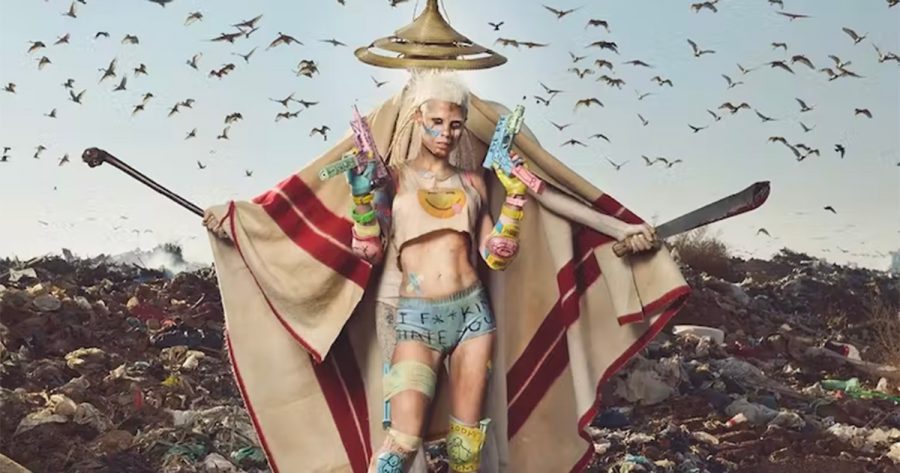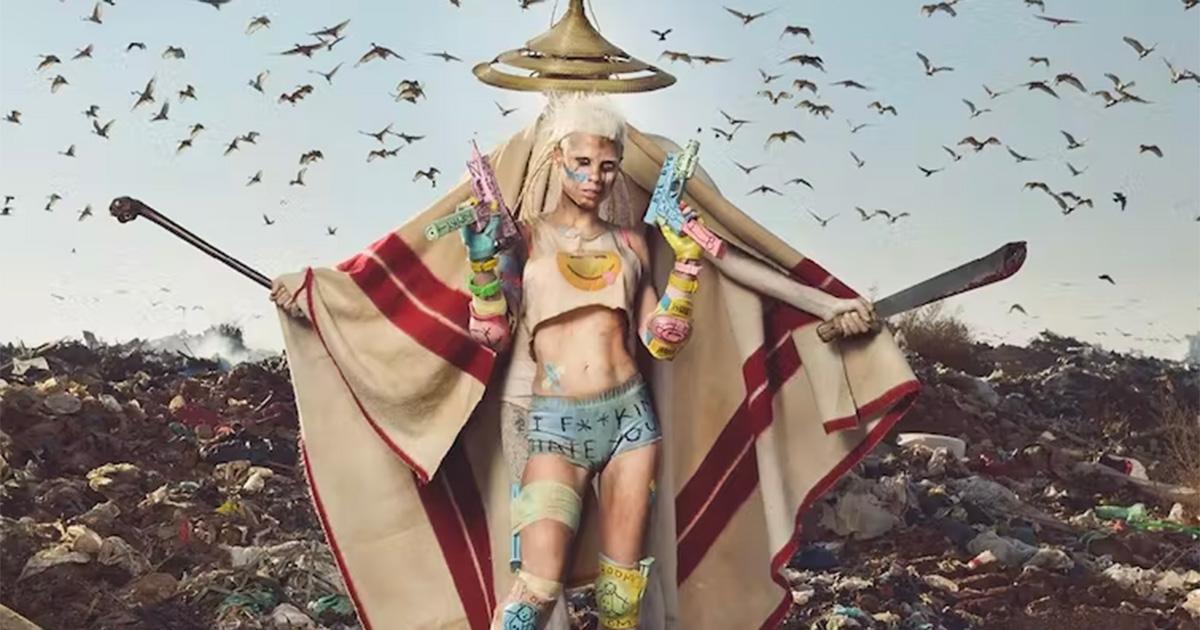
What Is Cultural Appropriation and Why Is It So Harmful? A Look at Die Antwoord
Die Antwoord is a South African band that uses hip-hop music to create a style it calls “zef”. Since it first appeared in 2009, Die Antwoord has been criticised for cultural appropriation (using cultural elements of a minority group in an exploitative way). It’s accused of copying the lyrics and styles of Cape Town artists […]

Die Antwoord is a South African band that uses hip-hop music to create a style it calls “zef”. Since it first appeared in 2009, Die Antwoord has been criticised for cultural appropriation (using cultural elements of a minority group in an exploitative way). It’s accused of copying the lyrics and styles of Cape Town artists rapping in South Africa’s Kaaps language, and of mimicking the visual styles of Cape Flats gang members. Adam Haupt, from University of Cape Town has researched and written extensively on hip-hop and identity. He discusses cultural appropriation and the role of power in interactions between dominant and marginalised subjects in a case like Die Antwoord’s.
What is cultural appropriation?
In an article on cultural appropriation, visual culture scholar Rina Arya writes:
Integral to the definition of cultural appropriation is an asymmetry of power between two cultures that involves the majority/dominant culture taking from the marginalised culture.
So, it’s more productive to think about cultural appropriation in terms of relations of power. For example, in South Africa, Afrikaner nationalists appropriated the local Kaaps language to produce the Afrikaans language, a version that stripped Kaaps of its creolised Khoi San, Arabic and south-east Asian roots to favour its Dutch origins because it could do so.
Cultural appropriation is both enabled by power and is an expression of power.
How is Die Antwoord a good example of this?
Die Antwoord means “the answer” in Afrikaans, the language associated with the dominant white minority rulers of apartheid South Africa.
The band has two members, Ninja and Yolandi. They created a hip hop outfit using Kaaps as a basis for their lyrics and styling Ninja as a Cape Town gangster. So, a privileged white man, Waddy Jones, created Ninja after previously crafting other hip hop personas such as Max Normal. Jones is neither “black”/“coloured” nor “white” working-class. He is not a gangster either.
Stereotypically, speakers of Kaaps have been presented as “mixed race” or “coloured” people. They were segregated from other categories of black South Africans in the service of apartheid ideology. Speakers of Kaaps have also been denigrated as speakers of “slang”, as if Kaaps were not a language in its own right.
To become known, Die Antwoord employed social media alongside performances at music festivals. The cartoonish violence and phallic imagery in its first video, Enter the Ninja, was designed to go viral. Once it did, the band was soon able to perform extensively in Europe and the US, thanks to a record deal.
In my book Static: Race and Representation in Post-Apartheid Music and Media, I argue that Die Antwoord’s success is thanks in part to racialised class inequality in South Africa and the fact that systemic racism has yet to be dismantled nearly three decades after democracy. The band used class privilege, social capital and networks to ensure that it succeeded – often at the expense of marginalised communities.
How did the cultural appropriation work?
Die Antwoord “borrows” heavily from Kaaps (also known as Afrikaaps) and from Afrikaans hip-hop. It draws on words and cultural expressions associated with black/coloured and white working-class multilingual speech communities. So it piggybacked off work done by black artists who established the cool of “rapping in the vernac”.
Die Antwoord could appropriate this music because it had the power to do so. But its appropriation went beyond performing verbal stereotypes. It was also embodied, for example, in Ninja adorning his body with particular Cape gang tattoos. To quote Static:
The band alludes to the numbers gangs, the 26s and 28s, via tattoos and the graffiti that appears in the background of their set.
Die Antwoord then sold itself as authentically South African to a global audience that knew nothing of the culture being appropriated.
Who actually pioneered Afrikaans hip hop?
Afrikaans/Kaaps hip hop was initially pioneered by the groups Prophets of da City and Brasse Vannie Kaap in the 1990s. It is now also championed by a wide range of hip hop artists from the Western Cape province, such as Rosey die Rapper, YoungstaCPT, Emile YX? and Jitsvinger to name just a few.
Prophets and Brasse did a great deal to validate black multilingualism in an environment that still favoured imperial language. Members of Prophets of da City went on to form bands like Skeem and Boom Shaka, shaping the country’s youthful kwaito music revolution. Kwaito affirms black multilingual modes of speech.
Where does blackface fit in?
While we might argue Die Antwoord’s use of tattoos and oblique references to the numbers gangs is a form of blackface, band members have literally blackened their bodies in the music video for the song Fatty Boom Boom, for example. Die Antwoord proudly displays blackface as part of its persona.
The US cultural historian Eric Lott reveals that blackface minstrelsy took shape in the US in the 1800s when “white men caricatured ‘blacks’ for sport and profit” by painting their own faces black and performing racist caricatures of “black” subjects for “white” audiences. These projections of blackness had little to do with the lived experiences of “black” subjects.
The US historian Alexander Saxton contends that minstrel shows “merged into vaudeville and the beginnings of cinema”.
Blackface is not a thing of the past. We need only think of South African filmmaker Leon Schuster’s many blackface performances in comedy movies that continue to appeal to South African audiences. Who can forget US singer Miley Cyrus twerking or the Dutch continuing to defend their blackface Christmas tradition Zwarte Piet as “traditional”?
Cultural appropriation and blackface persists in popular culture in a world facing a resurgence of right wing politics in the form of ethnonationalism, xenophobia and fascism. To this day, black communities fight for the right to represent themselves on their own terms with dignity.
Die Antwoord’s use of cultural appropriation to gain global fame is enabled by the continuing asymmetry of power relations that play out along race, gender and class lines.![]()
Adam Haupt, , University of Cape Town
This article is republished from The Conversation under a Creative Commons license. Read the original article.
